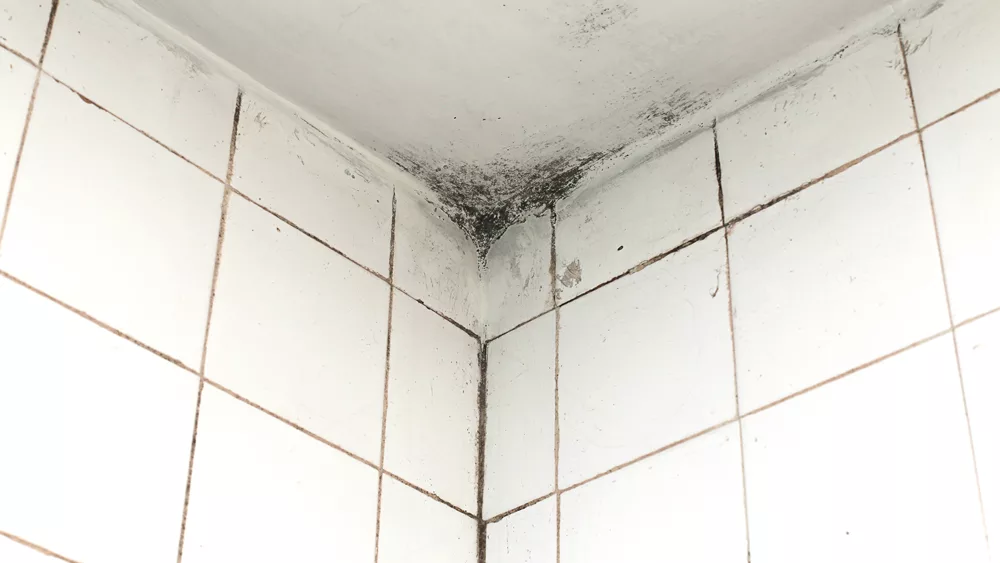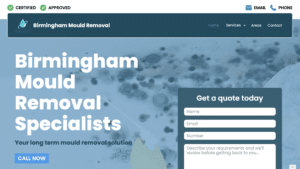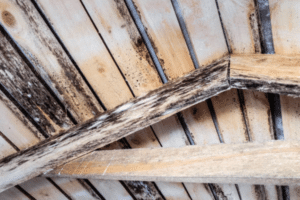The bathroom is also the perfect place for mould to grow and spread, thanks to a combination of factors such as high humidity, a lack of ventilation, and more.
Here at Mould Removal London, we’ve put together this guide to take you through the process of removing mould in your bathroom, step by step.
*However*, cleaning mould yourself should only be attempted if the patch is very small and isolated to one area.
Anything larger can indicate a deeper underlying problem, and attempting to clean that yourself may only aggravate the situation and put your health at serious risk.
Operating throughout London and the surrounding areas we utilise advanced solutions and tools to eradicate all traces of mould from your bathroom.
So that the next time you turn on the shower, you can completely relax in a safe and clean environment.
Contact us to learn more about how we can help.
We have broken down the task ahead into four distinct steps, including measures you can take following the clean to reduce the chances of mould reappearing.
These include:
- Sizing up the task
- The supplies you will need
- Cleaning the mould
- Aftercare
Step 1: Sizing up the task
The first step is to assess the issue and see whether it is something you can realistically tackle by yourself.
We must stress that you should not attempt the clean if you experience any respiratory-related issues or are otherwise unwell.
You may likely be dealing with a mould issue if you notice some of the following signs:
- Dark patches on the wall or in between tiles
- A musty, lingering smell in the air
- You experience any of the following symptoms after remaining in the bathroom for some time: coughing/watery eyes/nausea/runny nose
According to the NHS:
“Inhaling or touching mould spores may cause an allergic reaction, such as sneezing, a runny nose, red eyes and skin rash. Moulds can also cause asthma attacks.”(1)
The visual signs are usually the clearest, a black or dark-coloured patch on the wall is generally a good indicator that there is mould present.
Mould also produces mycotoxins, toxic spores, which float through the air and can give the room a musty smell.
These spores can recolonise in other areas if the air is not professionally treated.
Here at Mould Removal London, we provide a free air treatment as part of our mould remediations, utilising industry-grade fogging machines to remove these spores before they spread elsewhere.
Make sure to always wear the correct personal protective equipment as you attempt the clean, including a medical-grade mask if you have one, as well as gloves.
We’ve noted the items you will need, as well as how to carry out the clean, in the next stages.
If the growth of mould has already progressed to a later stage, more than a simple patch, then we highly recommend you get in touch with a professional mould removal service, who will not only be able to diagnose the issue but discover whether you have a larger issue at hand which may be the root cause.
This will help to keep you and the other occupants of the property safe.
Step 2: The supplies you will need
The key to winning the bathroom mould removal battle lies in the products that you use.
To achieve the most comprehensive clean, professional-grade cleaning solutions are recommended, however it is possible to use household items as well, although the quality of the clean will not be as high.
If you do attempt the clean yourself, you will require the following items
- A mask (medical-grade preferably)
- Gloves
- Goggles/protective glasses
- Distilled white vinegar/borax/soap
- A spray bottle
- A rag (to wipe clean)
There are a few approaches you can take to remove mould.
One is to use distilled white vinegar – you can dilute it on a 1:1 ratio for cleaning tile floors, however you can also use it directly on walls (using a sponge or a cloth).
If the patch is small enough, a simple mix of soap and warm water may be enough to do the trick.
You should NOT use bleach on walls and ceilings, as this can permanently stain or damage your walls.
It is possible to use bleach on nonporous surfaces, such as sinks, bathtubs, showers, etc.
However, this should be done so in a well-ventilated area and with a heavily diluted solution of 1:10 bleach to water.
Step 3: Cleaning the mould
Start by putting on your gloves, protective glasses, and mask.
During the cleaning process, mould spores will be disturbed, which can irritate your eyes and nose if the correct protection is not worn.
Open any windows that can be opened to increase ventilation, this will also help to remove airborne mould particles as they are disturbed.
If at any point during the clean you feel unwell, please do not attempt to continue the clean.
You are welcome to get in touch with us to discuss the issue and how to proceed, should you wish to do so.
Using a spray bottle, or a sponge, apply the white vinegar directly onto the patch of mould.
Allow the vinegar to sit there for approximately 10 minutes, before wiping it away with a sponge or cloth.
This should remove most cases of minor mould growth.
Step 4: Aftercare
Following the clean, you may want to think about what caused the mould to build up in the first place, and how to can prevent its return in the future.
Mould requires warmth, oxygen, humidity, and a lack of ventilation in order to grow, which is why bathrooms tend to be the perfect areas for mould growth.
While the other factors can’t be helped, you can help manage mould levels by increasing ventilation, either by opening windows or by using an extractor fan when you are having a shower or bath.
It is possible that an underlying issue is increasing moisture content in the room, such as a leaking pipe.
If you notice an abnormal growth of mould, we recommend getting in touch with a professional, who will diagnose the issue for you.
Summary:
In minor cases, it is possible for you to remove small mould patches by yourself.
However, this is only for minor and isolated cases, as anything larger could signify a deeper issue that needs to be remedied, otherwise it could result in expensive repair fees as the mould grows.
We invite you to get in touch with our friendly team at 0203 130 4068, who will discuss your situation and arrange for a technician to assess the mould in person.
With access to industry-grade equipment and solutions, we’re here to help.
We quickly get to work diagnosing the underlying issue, before removing all traces of mould from your property.




